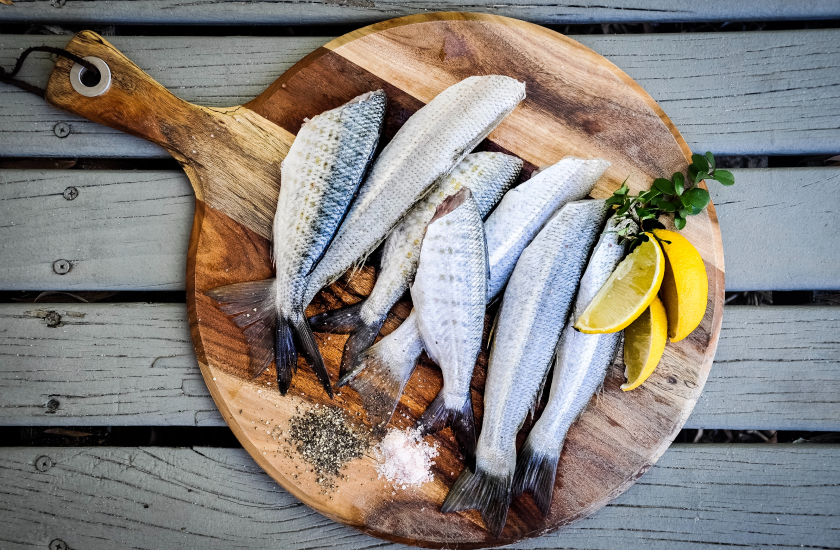Fish
-
Beefs
Beefs
-
Chicken
Chicken
-
Pork
Pork
-
Eggs
Eggs
-
Fish
Fish
-
Lamb
Lamb
-
Goat meat
Goat meat
-
Honey
Honey
-
Sea Food
Sea Food
-
Milk
Milk
-
Cheese
Cheese
-
Yogurt
Yogurt
Our Brochures
Contact Us
Social Media


Fish are mainly aquatic vertebrate animals, generally ectothermic and breathing through gills. They are usually covered with scales and are endowed with fins, which allow them to move continuously in aquatic environments, and gills, with which they capture the oxygen dissolved in the water.
Protein in Fish
Fish protein is among the best sources of protein. A 3-ounce serving of fish has about 17 grams of protein. In comparison, a 3-ounce serving of skinless chicken breast has 20 grams of protein, a half-cup of cooked lentils has 9 grams, and an egg has 6 grams of protein. A 1-ounce serving of bacon has 4 grams of protein, and a 2-ounce serving of sausage has 8 grams.
For context, the recommended daily intake of protein is 0.8 grams per kilogram of body weight, or 0.36 grams of protein per pound of body weight. If you weigh 154 pounds, you need about 56 grams of protein per day. If you weigh 198 pounds, you need about 72 grams of protein per day.
Fish protein
Protein sources
3-ounce serving
Skinless chicken breast
Cooked lentils
Recommended daily intake
Grams per kilogram of body weight
Grams per pound of body weight
56 grams of protein
72 grams of protein
Which Fish Has Highest Protein?
- Tuna: Contains the highest protein (33g per 100g serving) and essential nutrients, but high in mercury; limit to three servings per week.
- Anchovy: Offers 29g of protein per 100g serving and low mercury levels, making it a safe high-protein option.
- Shrimp: Provides 24g of protein per 100g serving and low mercury levels, suitable for weight loss diets.
- Lobster: Has 22.1g of protein per 100g serving, is a low-fat and low-calorie protein source with low mercury content.
- Halibut: Contains 22.5g of protein per 100g serving, and is rich in heart-healthy nutrients; has low to moderate mercury levels.
- Salmon: Offers 20.5g of protein per 100g serving, low in calories and rich in omega-3 fatty acids; generally low in mercury.
- Tilapia: Delivers 26g of protein per 100g serving and is rich in nutrients; has low mercury content.
- Pollock: Provides 20g of protein per 100g serving and has a range of nutrients; safe for daily consumption due to low mercury levels.
- Cod: Contains 23g of protein per 100g serving and is a lean source of protein; low in mercury.
- Mackerel: Has 19g of protein per 100g serving and is rich in omega-3 fatty acids; high in mercury, so consumption should be limited.
- Sardine: Offers 12g of protein per 100g serving and contains beneficial nutrients; has low mercury levels and can be consumed daily.
Maximizing the Health Benefits of Fish: A Guide to Nutrients, Recipes, and Smart Choices
- Health Benefits of Fish in a Healthy Diet
Low-fat, high-quality protein
Rich in omega-3, vitamins (D, B2), minerals (calcium, phosphorus, iron, etc.)
Recommended twice a week by the American Heart Association
Can lower blood pressure and reduce heart attack/stroke risk - Healthy Fish Recipes and Guide
Learn proper cooking methods
Choose seafood low in contaminants and high in health benefits
Good sources of omega-3: salmon, trout, sardines, etc. - Benefits of Omega-3 Fatty Acids
Promotes heart and brain health
Supports infant development during pregnancy
Might reduce the risk of various diseases including depression and arthritis

